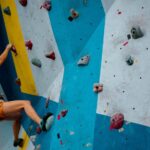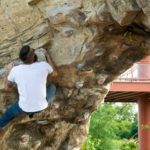If you are into rock climbing or bouldering, there is a high chance you might have come across the controversial question of whether rock climbing is better than weight lifting or not?
There is no right answer to this question. Where both rock climbing and weight lifting share a lot of similarities, they both focus on completely different goals. A rock climber’s main objective, in most cases, is to carry less weight and gain more strength while most bodybuilders work hard to gain as much muscle mass as possible, which is exactly opposite to what climbers are aiming for.
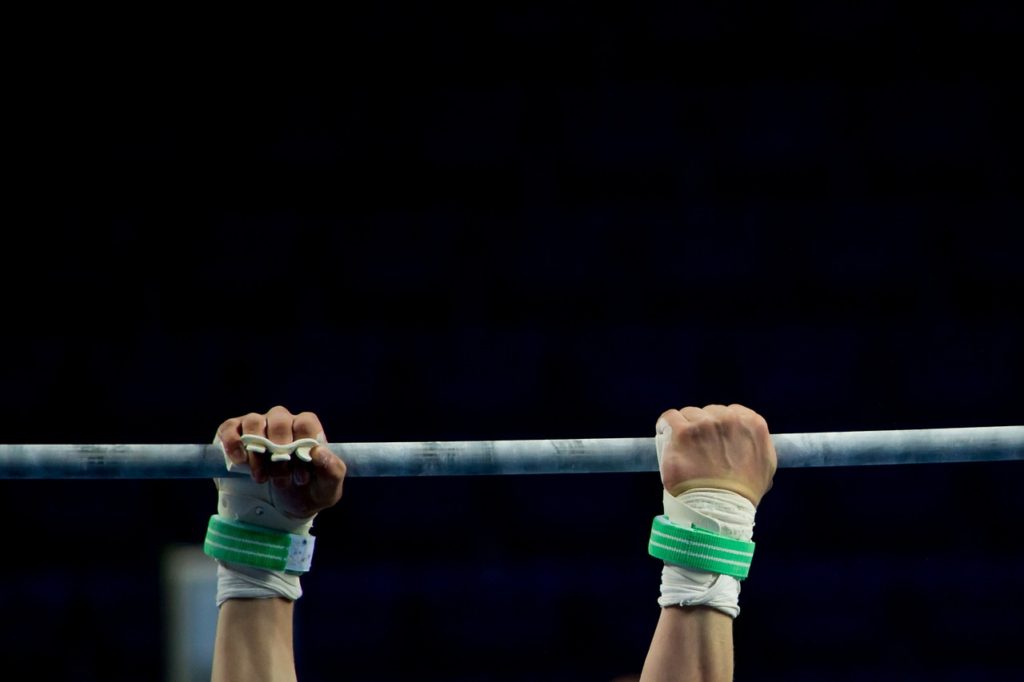
Most climbers believe that weight lifting will make them worse at climbing and will make them reach a plateau sooner. You will be glad to know that this idea is nothing but a myth. Yes! climbing and weight lifting don’t usually go hand in hand, but there is a completely different reason behind it.
Talking about this concept Steve Bechtel, an avid climber and a coach at Climb Strong says,
“Climbers say they don’t need to resistance train—they just need to climb but you hear that from every athlete in every sport, from skiing to basketball to badminton, and that mentality is how people get hung up and plateaued. Strength training is an effective injury-prevention measure, especially in light of the recent hang boarding craze. Everybody’s fingers are getting really strong, which leads to a lot of shoulders blowing out. Fingers are latching on but the shoulder girdle isn’t able to support the load.”
Physiology of Muscles
Before we move on to understanding how rock climbing and weight lifting can be compared, it is important to understand the physiology of muscles.
Muscles consist of three types of cells:
- Slow-twitch muscle cells
- Intermediate twitch muscle cells
- Fast-twitch muscle cells
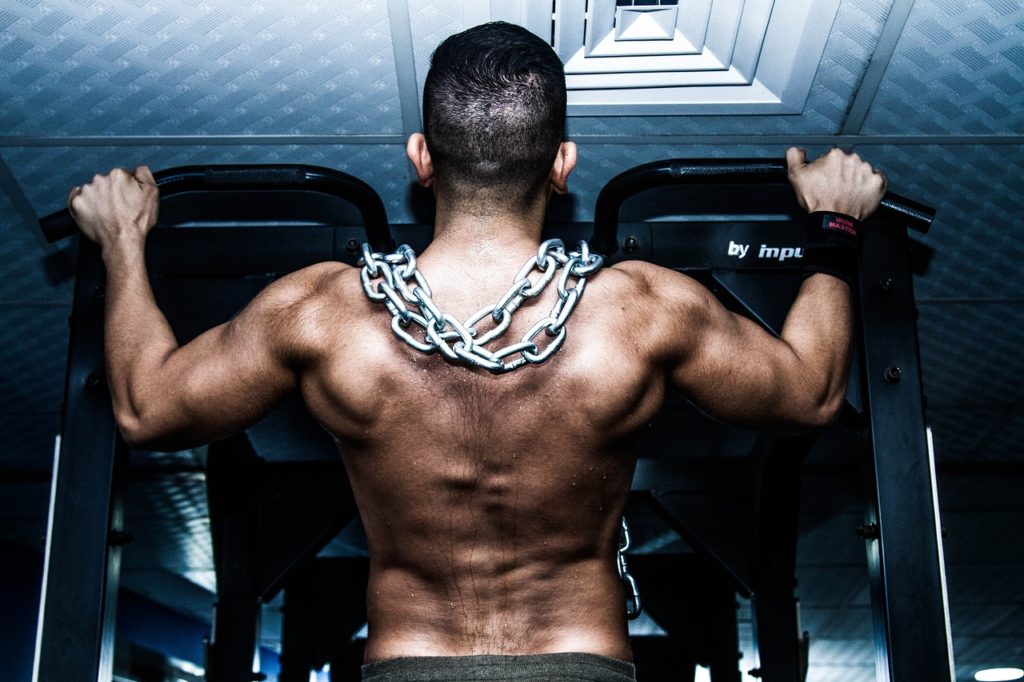
Anything you do to stimulate your muscles, even the most powerful movements, first fire up the slow-twitch muscle cells. As you exert more and the required strength output increases intermediate and fast-twitch muscles are fired up respectively. This also holds for increased speeds. As you start walking or running slow-twitch muscle cells come into action and as speed increases other types of cells follow.
Can climbing be compared to weight lifting?
Rock climbing is an intense sport that activates almost every muscle in your body including glutes, hamstrings, quads, and spinal extensors. However, a rock climber’s movements are usually slow unless he/she is bouldering from one crevice to another in one dynamic move. Hence, only slow-twitch muscle cells are activated during the process. In addition to this, rock climbing is more of an isotonic activity which means all muscles contract normally during the process, and no single group of muscles is isolated. This is why rock climbers are usually pretty toned but are not bulked up with muscle like weight lifters.
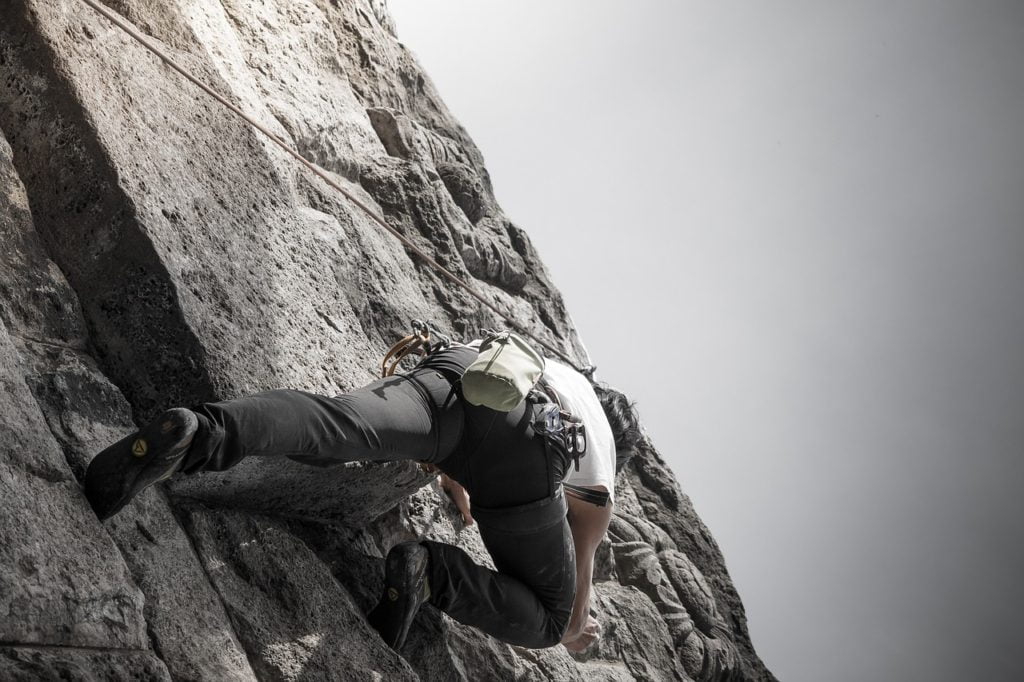
On contrary to this, weight lifting is more of a solitary activity and is usually categorized as isometric, which means a particular group of muscles is contracted at one time. Thus, Weight lifters, unlike climbers, are able to gain muscle mass faster and develop a buff look they usually aim for.
Is rock climbing better than weight lifting?
Now that we have understood how both activities work and what sort of an effect they have on muscles, let’s move on to the main question.
As mentioned, there is no proper answer to whether rock climbing is better than weight lifting or not. It ultimately depends on how you perceive a certain activity and what your goals are. Resistance is resistance, regardless of how it occurs. However, where climbing and weight lifting are not perceived as ‘different’ for your muscles, climbing is not usually considered equivalent or better than weight lifting. Climbing can be considered as weight training for muscles that are called upon but the whole process is not systematic like weight lifting. Hence, while climbing, certain muscles develop more than others and it does not do much to develop a leaner lower body (calves and feet being an exception). Some parts of the activity do tend to build muscles but based on this it cannot be considered equivalent to a standard, whole body weight room conditioning workout.
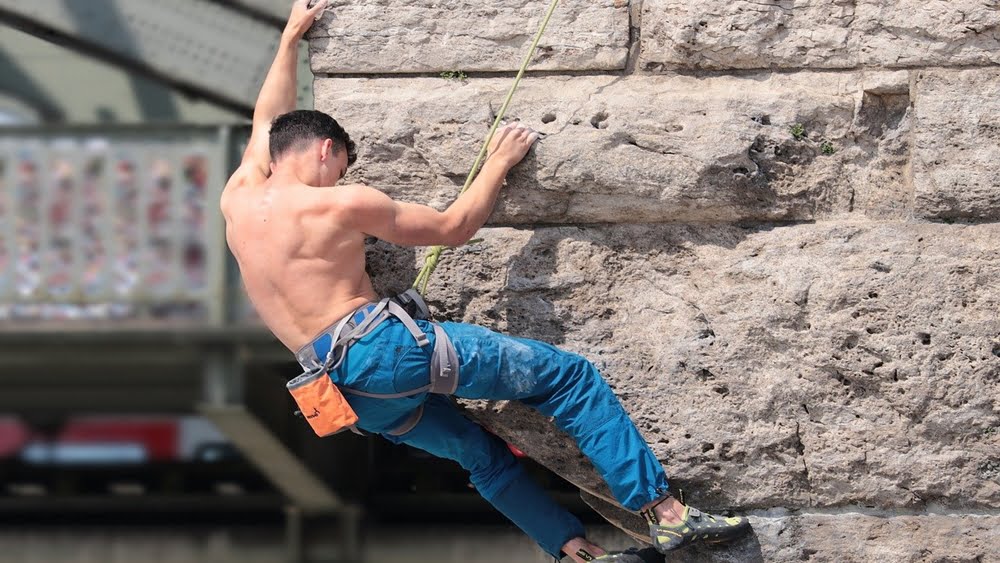
Will weight lifting help you in climbing better?
Since climbing is a strenuous activity, it is better to avoid weight lifting in between your climbing routine. Although it will not adversely affect your climbing it can lead to overuse injuries in joints and muscle tendons.
However, if you are on a break from climbing and bouldering, weight lifting can be a good way to keep up with your gains. Another exercise that can help you keep up with your gains and even move past a plateau is hangboarding. If you are not familiar with what hangboarding is and how is it useful for climbing check this blog out.
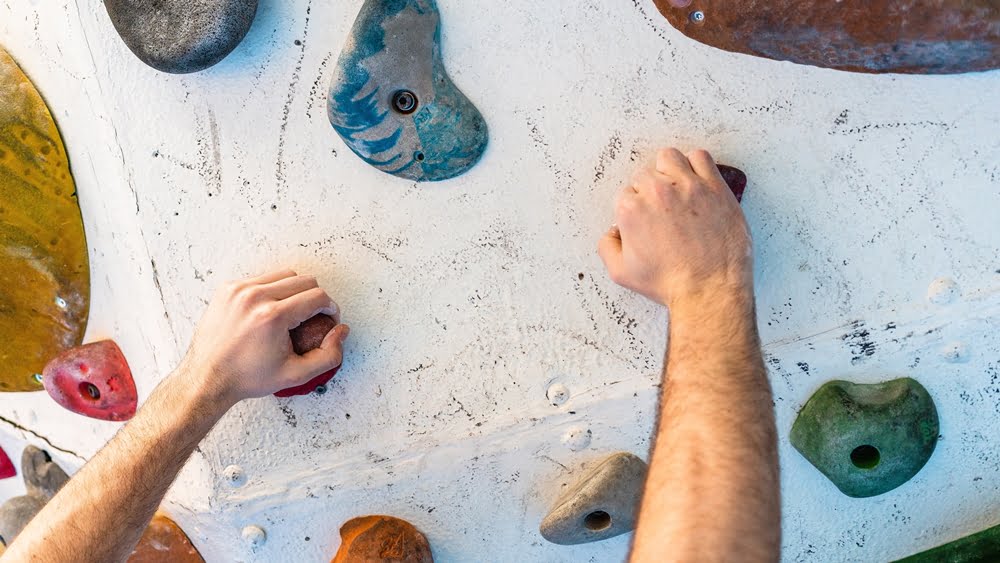
Hangboard, a.k.a. fingerboard, is the best tool to develop finger and wrist strength especially if you are stuck at home due to the ongoing pandemic. Here’s how you can use a hangboard to build muscle and train your fingers for climbing (link for the blog).
Conclusion
Rock climbing is one of the best whole body workout activities that you can do. However, if you aim at targeting a certain set of muscles you might want to stick to good old weight lifting only. Rock climbing will help you gain strength and even develop chiseled back and shoulders after years of training but it cannot substitute for weight lifting.
If your final goal is to become better at rock climbing and develop certain muscles in your body. Ideally, you should incorporate both activities into your routine. However, it is imperative that you don’t overwork your muscles and consult with a physician/trainer before diving into a training regime.
On the other hand, if you are looking to develop climbing-specific muscles, you might want to look into indoor climbing gyms. However, since most areas don’t have an indoor climbing gym, you can invest in a portable hangboard or in a wall-mounting hangboard to develop wrist and finger strength. Hangboard exercises when paired with cardio will give you enough strength to make dynamic movements. Moreover, experts believe that climbers who use hangboard as a medium of training are almost always successful in delaying and overcoming their plateau.




